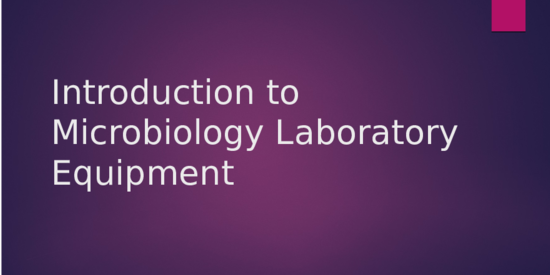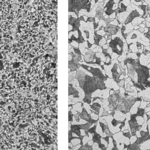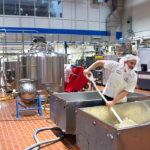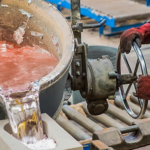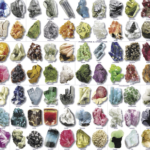- Microscope
A microscope is an essential tool for scientists. It is a combination of staining and light. Microscopes are used in viewing specimens that are too small that they cannot be seen by the naked eye. Types of microscopes include optical microscope, fluorescence microscope, scanning probe microscopes, and electron microscopes. Figure 1 shows a microscope.

- Bunsen burner
A Bunsen burner is an important equipment used in laboratories for heating. It provides a single open gas flame used for heating, sterilization and combustion. It is used as a gas filled heat source and it has an air valve to regulate the mixture of gas and air. Figure 2 shows a Bunsen burner.

- Spirit Lamp
Spirit lamp is also known as alcohol burner. It is a laboratory equipment used to produce an open flame. It uses a liquid fuel in a reservoir and burn the vapour, usually with an adjustable wick. Spirit lamps are sufficiently for performing some chemist standard microbiology laboratory produce and can also be used for sterilization. A spirit lamp is shown in Figure 3.

- Microscope Slide & Coverslip
Microscope slide is a thin flat piece of glass on which specimens can be mounted typically to hold them for examination under a microscope. The object is mounted on the slide and both are inserted together into the microscope for viewing.
Coverslips are small squares of glass that cover the specimen placed on the microscope such that they flatten the sample both in the wet and dry mounted slides. A microscope slide is shown in Figure 4.

- Pipette (Serological and Pasteur)
Serological pipette offer economical and accurate transfer of millimeter volumes of solutions in the laboratory. It reduces the possibility of cross-contamination.
Pasteur pipettes are also known as droppers. They are used to transfer small quantities of liquid. Serological and Pasteur are shown in Figure 5.


- Wash bottle, McCartney bottle and Dropping bottle
Wash bottles are squeeze bottles used to rinse equipments used in the laboratory. It has a nozzle.
McCartney bottle are used in the laboratory to carry culture medium and bacterial growth can be done in bottle.
Dropping bottles are small pitcher-shaped bottle with curved or tapered neck for supplying liquids in small quantities. They are also used for packing aromatherapy, etc. These equipments are shown in Figure 6.


- Petridish (glass or plastic)
This is a shallow cylindrical glass or plastic dish that is used to culture cell such as bacteria or small mosses. It is a small shallow dish with a loose cover used especially for cultures in bacteriology that fosters development. A Petridish is as shown in Figure 7.

- Test tube and Durham tube
Test tubes are slender glass containers that hold little amount of liquid and are used in scientific experiments. Their lengths can range between 50mm to 250mm, and their widths between 12 to 20mm. They are usually made of glass or plastic.
Durham tubes are used to detect production of gas by microorganism

- Inoculating loop and Inoculating needle
Inoculating loop is used by microbiologists to retrieve inoculum from culture of microorganisms.

Inoculating needles are used for studying bacteria and fungi on semi-solid inertia. It focuses on the inoculation and isolation of defined region of the culture. Inoculating needle has a handle to transfer bacteria from a culture to a petri dish. It is shown in Figure 9.
Questions
- Name three types of microscopes which may be used in a microbiology laboratory
- Light microscope
- Electron microscope
- Simple microscope
- In the microscopic study of bacterial microbiology, which will be more useful, the high-dry objective or the oil-immersion objection on, and why?
It is best to use oil-immersion objection because it increases the refractive index of a specimen when used properly. Slides prepared with oil-immersion techniques work best under higher magnification where oils increases refraction despite short focal lengths.
- Why is Bunsen burner preferred to spirit lamp in the flaming of slides, especially in the preparation of specimens for staining?
Because spirit lamp do not produce flame as hot as Bunsen burner.
- Mention one function of a Durham tube
Durham tubes are used in microbiology to defeat production of gas by microorganisms. They are simply smaller test tubes reserved upside down in another test tubes.
Introduction to Laboratory Equipment (0 downloads )